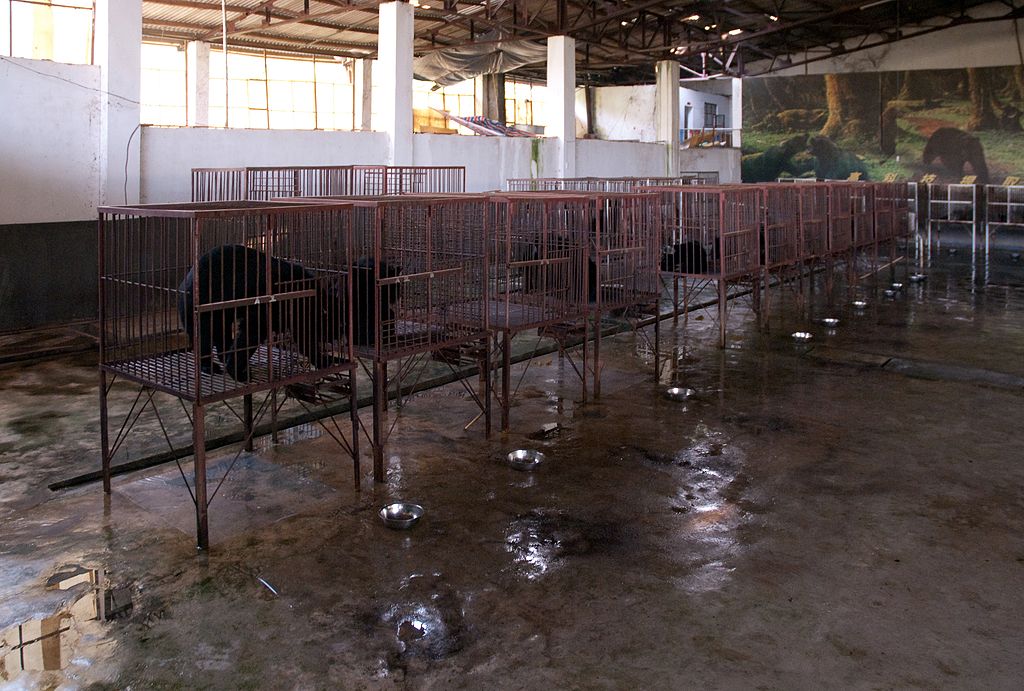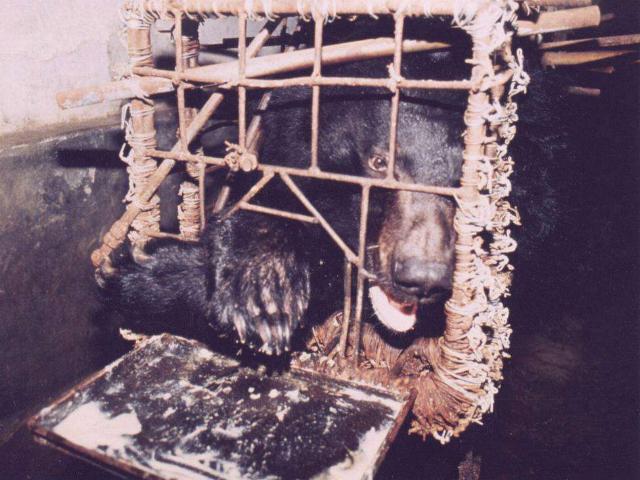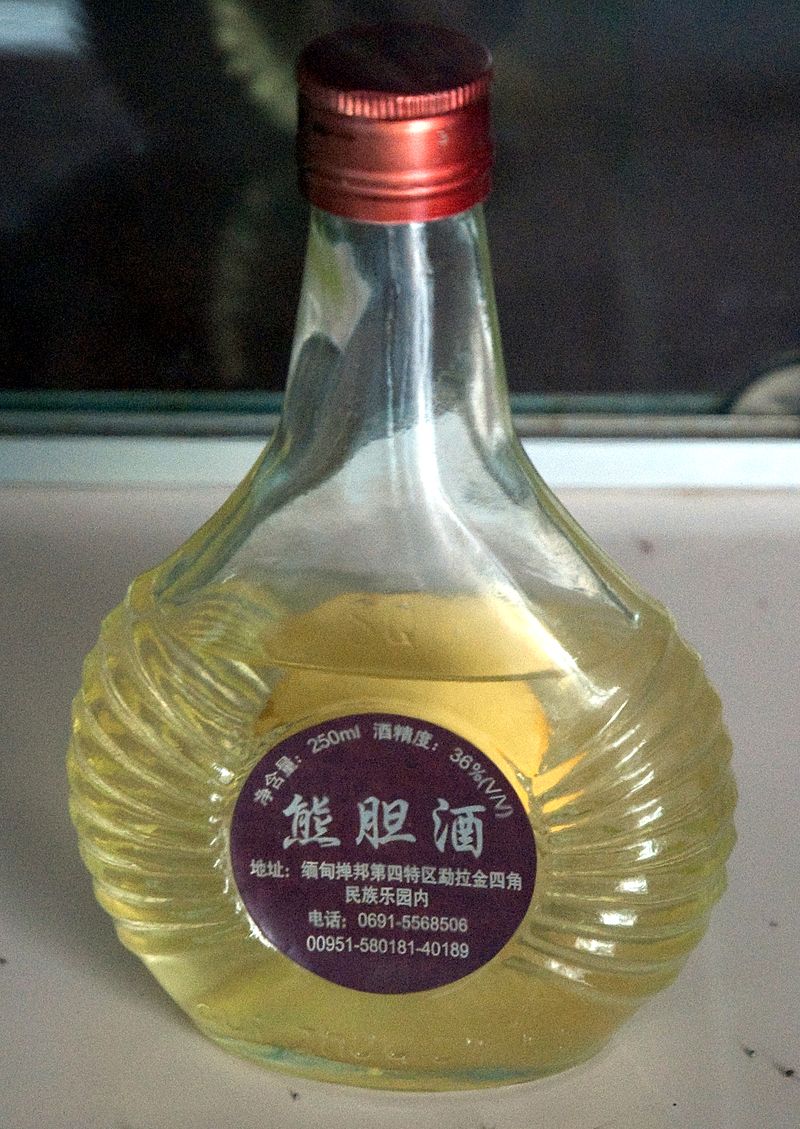Research
The impact of Bear Bile Farming on Conservation of Wild Bears
“For every complex problem there is an answer that is clear, simple, and wrong.”
– H. L. Mencken
The challenge facing most endangered species is the loss of their natural homes as human demand for land grows. In some places however the forests themselves are being emptied of elephants and tigers, bears and pangolins. The beauty of their pelts, the allure of their ferocity, ancient cultural links to their use or even just our empty bellies drive a vast illegal trade in animals.
We can (unfairly but usefully) caricature the responses to unsustainable wildlife trade as one camp who push to stop wildlife use all together and another which seeks to make the trade sustainable. That framing of the question complicates the matter since it raises moral questions about whether consumption of wildlife is a wrong in and of itself. The debates are therefore heated, for good reason, but in that heat clarity of thought regarding the merits of each camp from a purely conservationist standpoint are often blurred or lost all together. WildCRU’s work on wildlife trade has sought to look at these issues empirically and dispassionately in terms of the impact on the wild populations.
We have done a lot of work on “sustainable trade” solutions which, rather than relying on maintaining wild populations, concentrated entirely on domestication and intensive farming of the target species. The logic of farming is clear and simple. If people want something it is hard to stop them from getting it and instead, it is argued that if we can, we should provide lots of it cheaply, sustainably and legally. Wildcru’s work questioned the logic of farming wildlife from a purely conservation standpoint.
Many questions are raised by the farming of wildlife from a conservation standpoint. The simplest are: will consumers want to switch to the new farmed product and if consumers do switch will the competition dissuade hunters from taking that species from the wild? The answers to those questions depend upon the specifics of the trade. At WildCRU we considered, in detail, the specifics for bear bile a product used in traditional Chinese medicine.
We began with the consumer preferences. Wild bear bile is illegal and so we could not look directly at market numbers to see if farmed bear bile was displacing wild bear bile. We did already know that, despite bear farms existing for some decades, wild bear bile was still being seized by the authorities. We could say with certainty that if farming did have an impact of wild consumption it was not absolute. That did not rule out a significant depression in overall consumption.
Given the challenge of legality and the need to measure a hypothesized partial impact of farming we opted to run a stated preference exercise in China. Stated preference exercises involve interviewing people and asking them to imagine themselves making a choice in a market given the prices and attributes of the options available. With over 1600 people from across China we offered farmed and wild bear bile at different prices for a very serious illness and a not very serious illness. Despite, or in some cases because, wild bear bile was so expensive consumer preferences were fairly inelastic. The availability of farmed bear bile had little impact on consumers’ basic preferences when assuming that wild bear bile is illegal.
The stated preference work describes the process which undermines the argument for farmed bear bile. The simple argument that the wild product can easily be displaced is clear, simple and wrong.
Our argument did not end here however. Some would argue that the illegality of bear bile means that people will not consume it. The simplest response to this logic might be that there is no need for a farmed alternative then when there are many herbal alternatives in traditional Chinese medicine. However it cannot be ruled out that some may still consume the illegal product when they have no other choice. A simpler question is to look at how this affects the decisions of the hunting communities.
In Cambodia, with local student Ses Vannara, we carried out semi-structured and anonymised interviews in rural communities. We found that bear hunting is largely carried out by rural people. Those rural people are amongst the poorest in the world. They can earn $500 for a bear’s gall bladder (ignoring it’s paws and meat which are also desired). Hunting is carried out largely for deer and other game species and bear are taken when available.
It is impossible to look directly at an illegal trade carried out in vast wildernesses in vast human populations. We must instead build a case. Bear hunting is so cheap and desirable that it is difficult to support an argument that minor shifts in preferences in consumers, (driven largely by illegality rather than actual preference) might marginally depress prices and so dissuade hunters from taking a species which can net them more than a year’s salary.
Ultimately the argument that a legal sustainable trade will necessarily displace an illegal trade is as partial as saying that the availability of Spotify will stop people illegally downloading music. Or really that any legal market prevents theft. The truth lies in the detail of the specific trade – the ability to police and regulate the trade, the preferences of the consumer and the relative costs for the suppliers and prices they can offer. It is not possible to provide a definitive empirical answer but we can come close and make a reasonable judgement on the conservation impact.
None of this, however, deals with the basic moral questions regarding the caging and poor treatment of bears or legal hunting of elephants. For that reason – even if agreement is found on the conservation issue it is likely that the controversies will remain.
Related Pages
Wildlife Trade
Animal welfare in the wildlife trade
Global trade in exotic pets
Lion bones
Pangolins – poaching, trafficking and publicity
Publications
Dutton, A. J., Hepburn, C., & Macdonald, D. W. (2011). A stated preference investigation into the Chinese demand for farmed vs. wild bear bile. PLoS One, 6(7), e21243.








